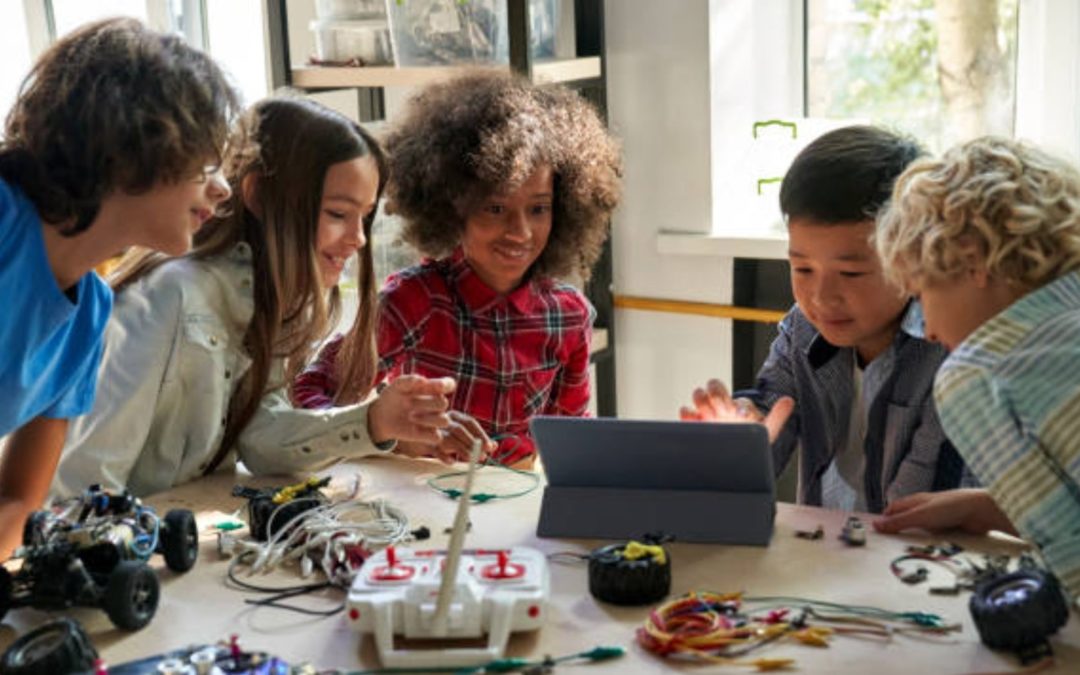Getting kids away from their screens and focused on learning sometimes feels impossible. Even in a learning environment like a classroom, the neverending presence of gaming provides constant distraction, and the little learners can’t wait to get classwork over with so they can begin their next gaming session.
It seems like we’re missing a significant opportunity to take advantage of the immense appeal that gaming has for young learners. Indeed, many learning platforms have already recognized and cashed in on this notion, with early childhood education tools—for children as young as three—being highly popular and more widely used than ever.
But that simple learning model disguised as gaming only goes so far, with kids catching on to the ruse and learning quickly that they’ve been misled and losing interest in their interactive education. Tools like ABC Mouse are great for little learners, but there’s not a lot of successful educational gaming for older students to learn more advanced topics. Not yet, anyway.
With digitization taking off like never before (thanks to the tech push fueled by the pandemic), there’s significant conversation and broader thinking around how we consume and interact with entertainment, work and education.
With this opportunity ripe for the taking, some companies are taking digital STEM learning to the next level. While online learning courses are nothing new, developers are taking a new approach that’s more appropriate for the highly digital age we’re deeply enmeshed in—mainly through the metaverse and tools like virtual reality.
Why STEM?
The number of professions, and openings, in the STEM field have grown exponentially over the past decade. As that demand rises, so does the need for education and training that prepares students for STEM-adjacent careers.
As the digital revolution rages on, STEM careers have never been more intertwined with the virtual world. It only seems appropriate that the education and training around these industries should be built within the very structure that they operate.
Traditional math and science programs aren’t cutting it anymore for multiple reasons. The major changes in digital technology call for a severe overhaul of the topics and methods needed for comprehensive learning. But students’ learning style (and attention span) has shifted dramatically over the past decade.
Why We Need a Shift
Topics like technology can no longer be taught in a simple, pen and paper learning environment. While building basic conductors and switchboards used to feel state-of-the-art, those projects may as well be akin to chiseling a wheel from stone in the face of virtual reality and the metaverse.
Today’s students are far more tech-savvy than any generation that came before them. Simple computer modules are no longer novel and attention-grabbing. For a chemistry or physics experiment to strike a chord, they’ve got to come with advanced graphics and engaging, interactive tech. In other words, they need to mimic a real-life experiment with actual reactions and outcomes.
How Gaming Comes Into Play
If the pandemic taught us anything about education, traditional teaching methods just don’t work in a virtual environment. Even as students have primarily returned to the classroom, the learning environment and approach to education have been permanently changed.
While the process was certainly rocky initially, we’ve begun to see the massive perks of combining digitized learning with classroom teaching. And with the impending mass adoption of the metaverse looms on the horizon, so does the opportunity to intertwine traditional learning with its shiny new digital counterpart.
Students already invest considerable time, energy and thought in immersive technology. By using that technology strategically and melding it with high-quality, educator-developed content, we can take advantage of delivering the knowledge students need through an approach they already love.
The digital revolution and higher-than-ever interest in gaming present a unique opportunity to make STEM learning more practical, accessible, engaging, and relevant than ever before. Suppose we can build the programs correctly and center the tech around the learners. In that case, gamified learning can provide a direct portal to highly engaging educational environments that ultimately fill the demand for dedicated pros in STEM fields.

